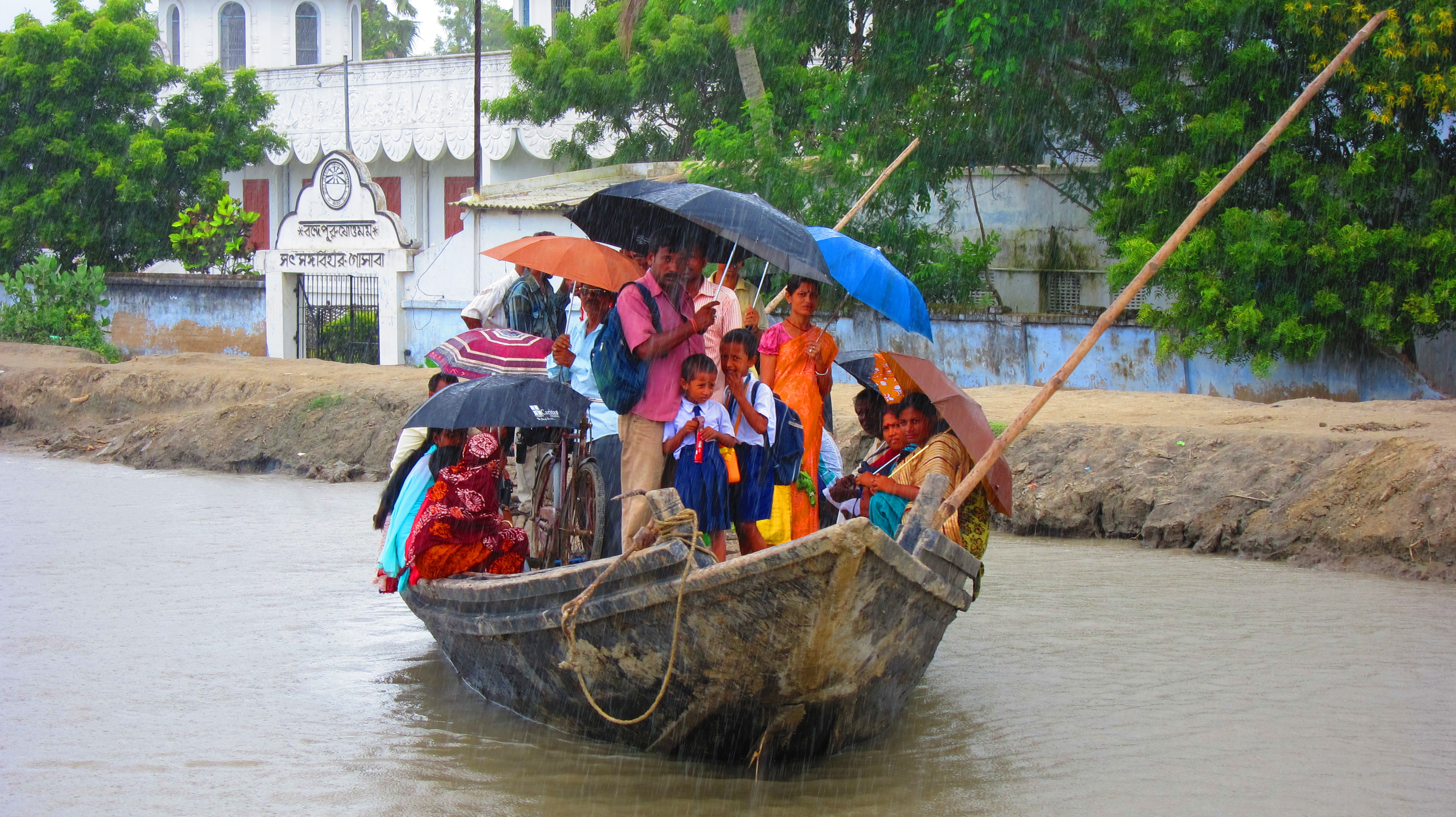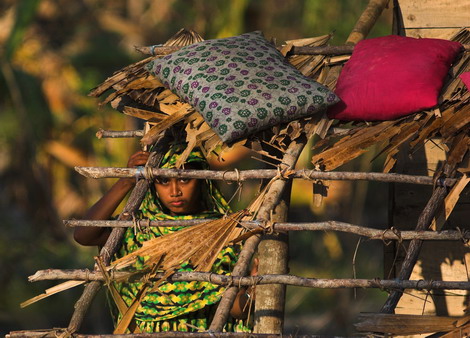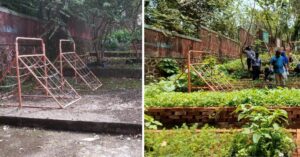Hit Hard by Climate Change, Rural Women In Sundarbans Turn Photographers
Here's how rural women of Sunderbans are using cameras to highlight the impact of climate change on the fragile mangrove forest.

In the Bengali language ‘Sundarban’ can be literally translated as ‘beautiful forest’. A World Heritage Site, the area is the largest block of continuous mangrove forest in the world, being home to almost 500 species of reptile, fish, bird and mammals, including the endangered Royal Bengal Tiger.
Divided by a complex network of streams, rivers, tidal creeks and channels, the islands are home to 40 lakh people.

Photo Source
The mangrove forests of the Sundarbans are an important biological shield against tropical storms and flooding for coastal communities on the Bay of Bengal.
Global warming is simultaneously inundating already unstable mangroves, intensifying storms and escalating disaster risk, with potentially devastating consequences for millions of people.

Photo Source
A group of poor rural women in the remote parts of the Sundarbans, whose lives have been hit hard by climate change, have turned into photographers to record the hardship they face. In the three blocks of Patharpratima, Namkhana and Kultali, a group of 80 women who work in the fields, collect honey or catch fish, were given cameras under a research project by Future Health Systems and IIHMR University. A part of a global initiative on Sunderbans, the project is supported by Johns Hopkins Bloomberg School of Public Health in Baltimore in USA.
Funded by UK Aid, the project used “photovoice”, a visual-action research technique through which people can portray their community by photographing their daily lives. Under it, rudimentary training on how to use digital cameras, how to approach a picture subject, and getting people’s consent was given to these women, who have never even seen the digital device before.
The aim was for the women to capture the goings-on in the villages of Sunderbans in the absence of the researchers.

Photo Source
The series of photographs clicked by these women aptly highlights several issues related life in Sunderbans by vividly portraying malnutrition, inadequate livelihood, pathetic access to healthcare services and lack of potable water, sanitation and hygiene in the archipelago.
The photos, released in a booklet ‘Climate Health And Resilience: A Photovoice Exploration In The Indian Sundarbans’ are stark and illuminating visual evidence of the plight of these isolated and vulnerable communities in Sunderbans.

Photo Source
An evidence of the tough conditions the residents live in and the challenges they face on a daily basis, these photographs are being used to negotiate with authorities at panchayat and block level for better amenities and infrastructure.
Here are a few stories of the weather-beaten life in Sunderbans, as told by the photographs taken by the village women whose work have become important scientific research evidence.

Photo Source
A photo clicked by Supriya Halder of Kultali showed a teenaged mother holding her underweight child. Girls in Sunderbans are married off early so that parents have a fewer number of family members to feed.
Gayatri Bera of Namkhana has captured the migration of men from the Sunderbans due to the uncertainty caused by large-scale depletion of agricultural land, and the government ban on honey and prawn collection. Being mostly farmers and fishermen in their own homeland, they find no other job elsewhere than to work as daily wage earners in the booming construction sector. In some villages of Sunderbans, only a handful of men between the age of 16 and 60 years remain.
A photo by Shibani Das of Patharpratima shows how a jetty, used by more than 1,000 people every day, has been lying in disrepair ever since it collapsed three months ago. Another shows a sliver of mud-road arching through a flooded area. This road, the only route to the primary health centre stays under water for most of monsoon.
Taken by Sandhya Pramanik of Patharpratima, a photo captures the plight of a man who has been living in a makeshift hut of a bamboo structure for more than six years after his family and house were devastated in Cyclone Aila.
Bandana Bera of Namkhana has photographed an old person being carried in a duli, fashioned out of a fishing net. In the absence of roads in most parts of her village, duli is what transports ailing people, pregnant women, sick children and the old and the infirm.
With their work, women villagers of the Sundarbans have contributed directly to research and ensured that their voices are being heard by building awareness of the problems faced by poor communities in the fragile setting of the Indian Sundarbans. More imaginative and observant than pictures that are taken by experienced photographers, these photos explore the gaps in the infrastructure as seen from the bottom, which may not always be the same as the way the policy makers or external researchers like to see.
Like this story? Or have something to share? Write to us: [email protected], or connect with us on Facebook and Twitter (@thebetterindia).
This story made me
- 97
- 121
- 89
- 167
Tell Us More
We bring stories straight from the heart of India, to inspire millions and create a wave of impact. Our positive movement is growing bigger everyday, and we would love for you to join it.
Please contribute whatever you can, every little penny helps our team in bringing you more stories that support dreams and spread hope.



















